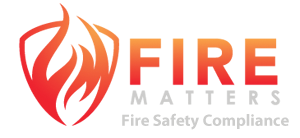Fire Safety Systems in Apartment Buildings: Why Assumptions Can Be Dangerous
When people move into an apartment building, there’s an unspoken trust that the property is safe. Residents assume the smoke alarms will activate in a fire, that sprinklers will operate correctly, that exit doors will open freely, and that evacuation systems will guide them to safety. In short, most people believe fire safety systems are always functional and without fault.
But this assumption can be misleading—and in some cases, dangerous.
Trust in the Body Corporate
Apartment owners and residents rely heavily on their body corporate and body corporate managers to ensure fire safety compliance. It’s a reasonable expectation: after all, they are the ones who control budgets, approve maintenance contracts, and engage fire protection providers. Residents trust that all statutory testing and repairs are completed properly and on time.
The Reality
In practice, this is not always the case. Too often, body corporate committees may not fully understand the complexity of fire safety systems or the strict legal requirements that apply. Even more concerning, budget pressures can sometimes take priority over safety.
A common issue is the way repairs are handled. Rather than authorising urgent works immediately, many committees request multiple quotes in the name of cost savings. While comparing prices might seem responsible, the delays caused can leave critical systems out of action for weeks or even months. In a fire emergency, that delay could prove catastrophic.
The statistics are telling: 82% of buildings fail their first fire safety audit. This highlights that non-compliance and faulty systems are far more common than most residents assume.
Why Fire Safety Systems Need Ongoing Care
Fire safety systems are not “set and forget.” They require:
- Regular inspections by licensed professionals.
- Immediate rectification of defects or failures.
- Clear records that demonstrate compliance with legislation.
- Adequate budget allocation for both routine maintenance and unexpected repairs.
- Prompt decision-making to avoid unnecessary downtime in life safety systems.
Ignoring or underfunding these obligations doesn’t just put residents at risk—it also exposes committees and managers to potential legal liability if something goes wrong.
A Shared Responsibility
Ultimately, fire safety in apartment buildings is a shared responsibility. While the body corporate is responsible for compliance, residents can—and should—ask questions and stay informed. If you’re an owner or tenant, you have every right to expect transparency about the state of your building’s fire safety systems.
The Bottom Line
Fire systems save lives, but only when they are properly maintained. Assuming they are fault-free without confirmation is a dangerous gamble. By prioritising fire safety over budget constraints, avoiding delays in repairs, and ensuring compliance is actively managed, body corporates can honour the trust placed in them by the people who live in their buildings.
Call to Action
If you are part of a body corporate committee, now is the time to review your building’s fire safety program. Ensure that your service providers are reporting clearly, that defects are rectified promptly, and that sufficient budget is allocated for compliance.
If you are a resident, don’t be afraid to ask your body corporate about the status of your building’s fire safety systems. Transparency and accountability can save lives.
Fire Safety Checklist for Body Corporate Committees
- Review service reports— make sure defects are clearly reported and understood
- Act promptly on repairs— don’t delay rectification while waiting on multiple quotes.
- Confirm compliance records— ensure all inspections and certifications are up to date.
- Allocate realistic budgets— allow for both scheduled maintenance and unexpected repairs.
- Engage qualified providers— only use licensed fire protection professionals.
- Communicate with residents— keep owners informed about the building’s fire safety status.
- Schedule audits— proactively check compliance rather than waiting for regulatory notices.

